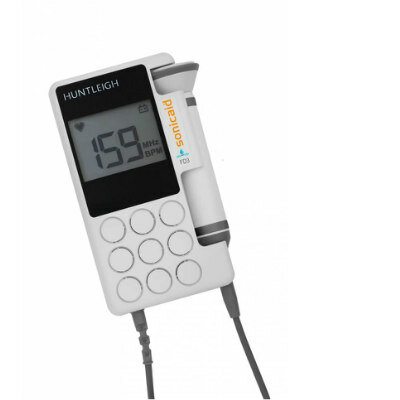Printable X-Ray Detectors to Bring About Step-Change in Imaging Applications
|
By MedImaging International staff writers Posted on 06 Apr 2023 |

Most X-ray detectors work in one of two energy levels: hard or soft. Hard X-rays are utilized to penetrate dense substances such as bone or rock, whereas soft X-rays are necessary for imaging living matter like tissue and cells safely. Typically, single-energy detection happens in the hard X-ray range of 10 to hundreds of kiloelectron volts (KeV). For detection in the soft window, energy levels below 1 KeV may be required. Occasionally, an X-ray detector must be capable of functioning across both energy levels. Consider the case of searching for tumors in breast tissue. Currently available multi-energy X-ray detectors, constructed from silicon and selenium, can function in both regions, but their energy sensitivity and spatial resolution are restricted. A promising alternative with greater effectiveness and versatility is now available in the form of metal halide perovskites.
The field of imaging applications could witness a significant advancement following the demonstration of a pathway to multi-energy X-ray detection with increased flexibility and sensitivity by researchers at Exciton Science (Melbourne, VIC, Australia). Developed by a team at Monash University (Melbourne, VIC, Australia), the technology is based on solution-processed, printable diodes made utilizing perovskite thin films, a component generally associated with next-generation solar energy devices.
Perovskite materials are known for their crystal structure and can regulate the intensity of X-ray beams passing through matter. They are also cost-effective to produce. When perovskite is incorporated into a diode device, the process of X-ray attenuation creates charges that can be collected to determine the energy and intensity of the X-ray. The latest research has shown that a perovskite-based multi-energy X-ray detector can operate across a wide range of energies, from 0.1 KeV to the 10s of KeV, surpassing the capabilities of traditional multi-energy X-ray detectors. This breakthrough technology has the potential to revolutionize the field of imaging applications.
Perovskite-based devices have previously been demonstrated to detect hard X-rays on a small scale, ranging from millimeters to centimeters. For the first time, researchers have successfully utilized perovskites for soft X-ray detection, with the potential for scaling up to large areas for commercial applications. Furthermore, since the perovskite detectors can be produced as a thin film, they can be integrated with flexible substrates, opening up possibilities for new device shapes and sizes.
“These perovskite-based detectors can provide rapid response times and offer high sensitivities to enable real-time detection and imaging for complex purposes, including disease diagnoses, detection of explosives and identifying food contamination,” said Dr. Babar Shabbir, a Senior Exciton Science Research Fellow and the study’s first author.
“This work showcases that there's a natural extension of perovskites into printed X-ray detectors,” added Professor Jacek Jasieniak of Monash University, an Exciton Science Chief Investigator and the study’s senior author. “They should be cheaper to make, and could also involve modified film form factors, where you need inherent flexibility. It opens up the field to a whole new set of questions about how to use these types of devices.”
Related Links:
Exciton Science
Monash University
Latest Radiography News
- Novel Breast Imaging System Proves As Effective As Mammography
- AI Assistance Improves Breast-Cancer Screening by Reducing False Positives
- AI Could Boost Clinical Adoption of Chest DDR
- 3D Mammography Almost Halves Breast Cancer Incidence between Two Screening Tests
- AI Model Predicts 5-Year Breast Cancer Risk from Mammograms
- Deep Learning Framework Detects Fractures in X-Ray Images With 99% Accuracy
- Direct AI-Based Medical X-Ray Imaging System a Paradigm-Shift from Conventional DR and CT
- Chest X-Ray AI Solution Automatically Identifies, Categorizes and Highlights Suspicious Areas
- AI Diagnoses Wrist Fractures As Well As Radiologists
- Annual Mammography Beginning At 40 Cuts Breast Cancer Mortality By 42%
- 3D Human GPS Powered By Light Paves Way for Radiation-Free Minimally-Invasive Surgery
- Novel AI Technology to Revolutionize Cancer Detection in Dense Breasts
- AI Solution Provides Radiologists with 'Second Pair' Of Eyes to Detect Breast Cancers
- AI Helps General Radiologists Achieve Specialist-Level Performance in Interpreting Mammograms
- Novel Imaging Technique Could Transform Breast Cancer Detection
- Computer Program Combines AI and Heat-Imaging Technology for Early Breast Cancer Detection
Channels
MRI
view channel
PET/MRI Improves Diagnostic Accuracy for Prostate Cancer Patients
The Prostate Imaging Reporting and Data System (PI-RADS) is a five-point scale to assess potential prostate cancer in MR images. PI-RADS category 3 which offers an unclear suggestion of clinically significant... Read more
Next Generation MR-Guided Focused Ultrasound Ushers In Future of Incisionless Neurosurgery
Essential tremor, often called familial, idiopathic, or benign tremor, leads to uncontrollable shaking that significantly affects a person’s life. When traditional medications do not alleviate symptoms,... Read more
Two-Part MRI Scan Detects Prostate Cancer More Quickly without Compromising Diagnostic Quality
Prostate cancer ranks as the most prevalent cancer among men. Over the last decade, the introduction of MRI scans has significantly transformed the diagnosis process, marking the most substantial advancement... Read moreUltrasound
view channel
Deep Learning Advances Super-Resolution Ultrasound Imaging
Ultrasound localization microscopy (ULM) is an advanced imaging technique that offers high-resolution visualization of microvascular structures. It employs microbubbles, FDA-approved contrast agents, injected... Read more
Novel Ultrasound-Launched Targeted Nanoparticle Eliminates Biofilm and Bacterial Infection
Biofilms, formed by bacteria aggregating into dense communities for protection against harsh environmental conditions, are a significant contributor to various infectious diseases. Biofilms frequently... Read moreNuclear Medicine
view channel
New SPECT/CT Technique Could Change Imaging Practices and Increase Patient Access
The development of lead-212 (212Pb)-PSMA–based targeted alpha therapy (TAT) is garnering significant interest in treating patients with metastatic castration-resistant prostate cancer. The imaging of 212Pb,... Read moreNew Radiotheranostic System Detects and Treats Ovarian Cancer Noninvasively
Ovarian cancer is the most lethal gynecological cancer, with less than a 30% five-year survival rate for those diagnosed in late stages. Despite surgery and platinum-based chemotherapy being the standard... Read more
AI System Automatically and Reliably Detects Cardiac Amyloidosis Using Scintigraphy Imaging
Cardiac amyloidosis, a condition characterized by the buildup of abnormal protein deposits (amyloids) in the heart muscle, severely affects heart function and can lead to heart failure or death without... Read moreGeneral/Advanced Imaging
view channel
New AI Method Captures Uncertainty in Medical Images
In the field of biomedicine, segmentation is the process of annotating pixels from an important structure in medical images, such as organs or cells. Artificial Intelligence (AI) models are utilized to... Read more.jpg)
CT Coronary Angiography Reduces Need for Invasive Tests to Diagnose Coronary Artery Disease
Coronary artery disease (CAD), one of the leading causes of death worldwide, involves the narrowing of coronary arteries due to atherosclerosis, resulting in insufficient blood flow to the heart muscle.... Read more
Novel Blood Test Could Reduce Need for PET Imaging of Patients with Alzheimer’s
Alzheimer's disease (AD), a condition marked by cognitive decline and the presence of beta-amyloid (Aβ) plaques and neurofibrillary tangles in the brain, poses diagnostic challenges. Amyloid positron emission... Read more.jpg)
CT-Based Deep Learning Algorithm Accurately Differentiates Benign From Malignant Vertebral Fractures
The rise in the aging population is expected to result in a corresponding increase in the prevalence of vertebral fractures which can cause back pain or neurologic compromise, leading to impaired function... Read moreImaging IT
view channel
New Google Cloud Medical Imaging Suite Makes Imaging Healthcare Data More Accessible
Medical imaging is a critical tool used to diagnose patients, and there are billions of medical images scanned globally each year. Imaging data accounts for about 90% of all healthcare data1 and, until... Read more
Global AI in Medical Diagnostics Market to Be Driven by Demand for Image Recognition in Radiology
The global artificial intelligence (AI) in medical diagnostics market is expanding with early disease detection being one of its key applications and image recognition becoming a compelling consumer proposition... Read moreIndustry News
view channel
Bayer and Google Partner on New AI Product for Radiologists
Medical imaging data comprises around 90% of all healthcare data, and it is a highly complex and rich clinical data modality and serves as a vital tool for diagnosing patients. Each year, billions of medical... Read more



















